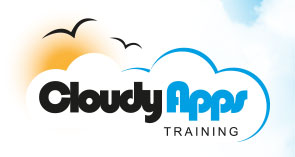


Course CLD104 - Cloud Computing using Microsoft's Azure Framework
Duration: 5 Days
Course Background
Azure is Microsoft's Cloud Computing framework. It, as one would expect, has been designe to "play nicely" with .Net and leverage Microsoft's .Net technology and associated .Net development tools.
Course Prerequisites and Target Audience
This is a 5 day hands on programming course for developers who already have a working knowledge of the .NET framework and of .NET programming. The aim of the course is to enable attendees to build fault tolerant, scalable and secure cloud-based applications using the Azure platform and existing Visual Studio and .NET programming skills. This will include ASP.NET and Microsoft WCF (Windows Communication Foundation) Attendees are assumed to have a good working knowledge of C#, ASP,NET, and SQL Server, as well as some familiarity with XAML as it is used in WPF (Windows Presentation Foundation) and Silverlight. This course is aimed at - technical systems administrators, technical IT and data center managers, and strategic planners.
Course Outline
- Cloud Computing - Foundations
- Cloud Computing - the concepts
- Cloud computing - constituents
- Internet
- Data Center
- Hypervisor
- Fabric and Framework
- Data Center
- Overview of the Windows Azure Platform
- Understanding where cloud computing solutions are not appropriate
- Developing an Azure Application - The Basics
- Signing Up for Windows Azure
- Registering an Azure account
- Overview of the Azure Tool Set
- Building an Azure application in Visual Studio
- Adding Web and Worker roles
- ASP.NET cloud programming in Azure
- Testing an Azure application
- Publishing and Configuring an Azure application
- Understanding The Azure Service Model
- Windows Azure Roles
- Definition and configuration of services
- The service runtime API
- Reading and modifying configuration settings
- Endpoints
- Inter-Role communication mechanisms
- Changes and subscribing to changes
- Service Management API
- Managing versions and upgrades
- Accommodating Native and Non-.NET code
- Windows Azure Sandbox
- FastCGI and PHP
- Avoiding problems associated with running native code
- Worker Roles
- Asynchronous background processing
- Inter-role communication
- AJAX use to poll for worker completion
- Azure Queuess
- Overview and essential concepts
- Queue operations
- Sending messages to a queues
- Serialising an object for queuing
- Retrieving and reading queued messages
- Data Storage and Data Persistence
- Azure Storage Services
- Storage accounts
- Local vs. Cloud Blob storage
- Storage clients
- Blobs
- Blob service
- Blob Storage API
- Containers
- Block and Page Blobs
- Blobs
- Blob usage patterns
- Saving, accessing and deleting blogs
- Windows Azure XDrive
- Custom Domain Names and CDN Access
- Data and Databases
- Windows Azure Tables and Table operations
- ADO.NET Data Services - Foundations
- SQL Azure
- Creating and working with SQL Azure Databases
- Differences between SQL Azure and SQL Server
- Full-Text search
- Concurrent updates
- Backups and backup security
- Protecting data in motion
- Protecting data at rest
- Migrating ASP.NET applications to Azure
- Adapting Web Forms security for Azure
- Azure enabled membership and role providers
- Access rules and access roles - policy and implementation
- ASP.NET login controls usage in Azure
- Using SSL for transport security
- ASP.NET sessions and profiles in Azure
- Analysis and design aspects
- Writing a session to Azure storage
- Adapting profile configurations for Azure
- Service-Oriented Azure Application Development
- Overview of Web Service Concepts - SOAP and REST
- Hosting WCF services in Azure
- Creating a WCF Service Web Role
- WCF service programming and implementation
- WCF Bindings
- Using SOAP or REST to access Azure services
- Making use of Azure services from WPF and Silverlight